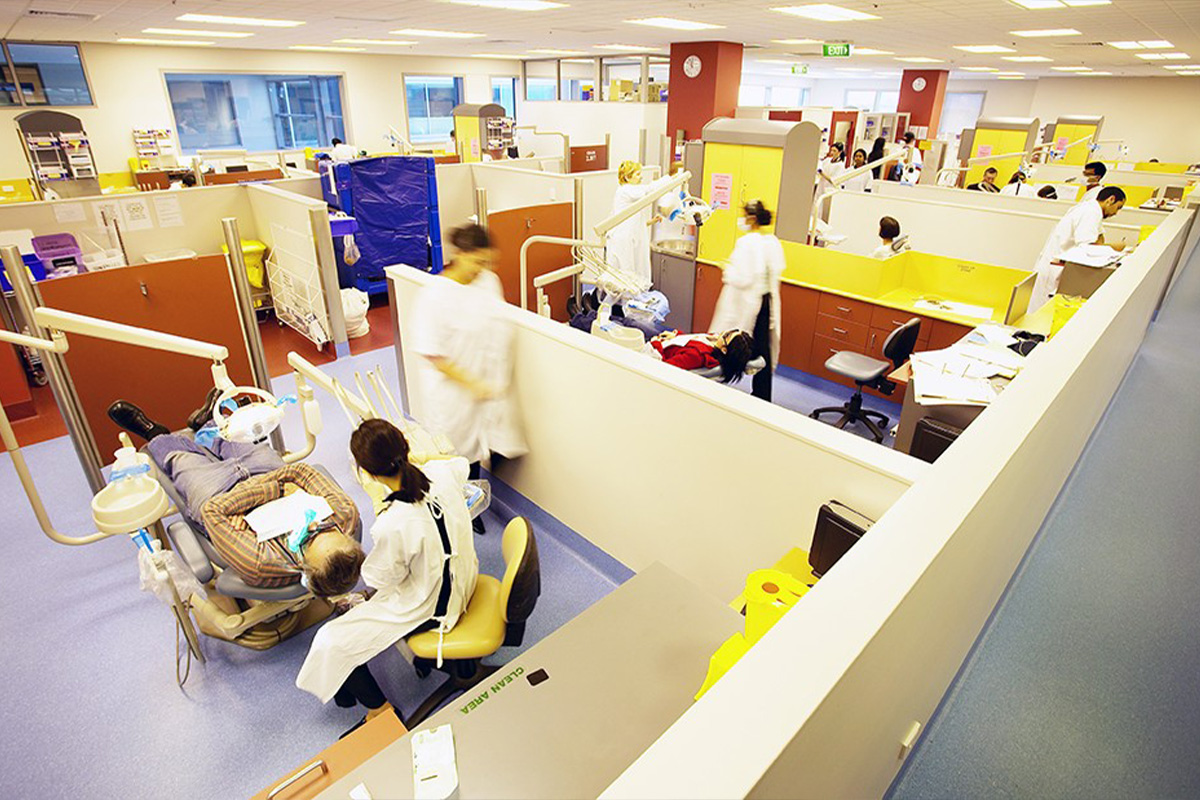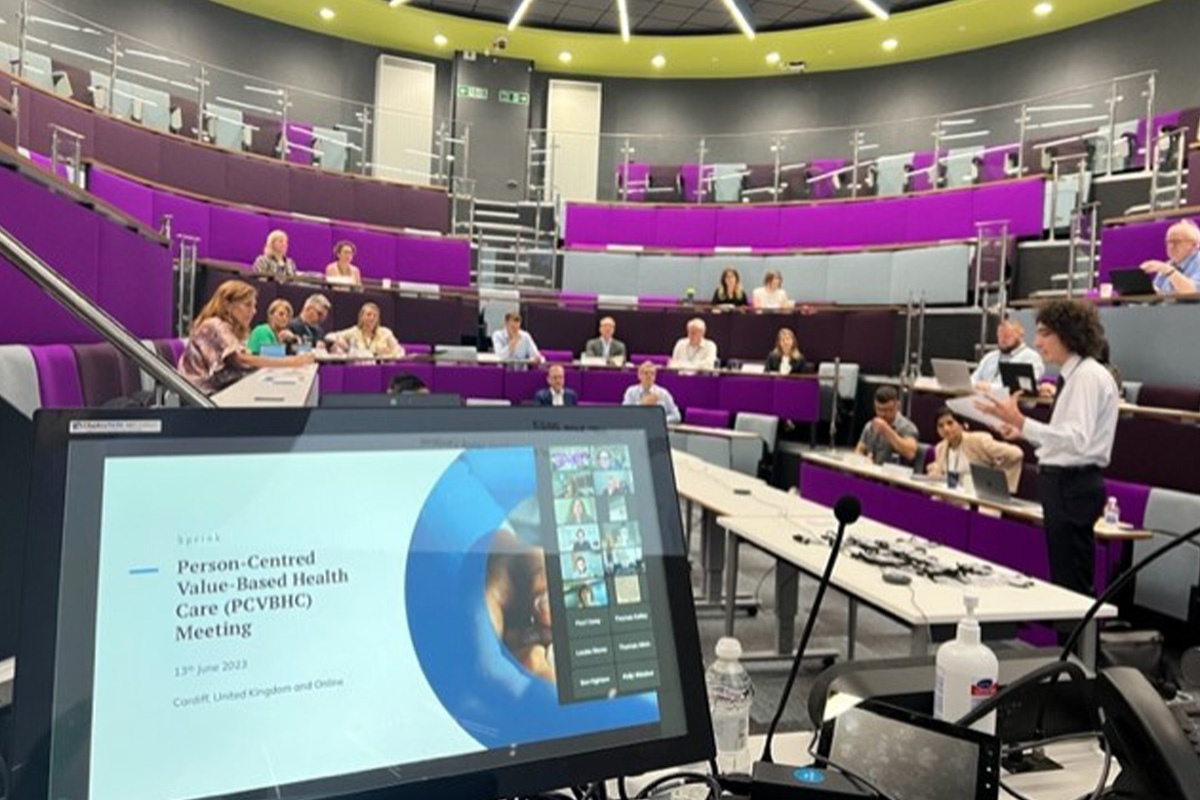Dental Health Services Victoria (DHSV) is the lead public oral health agency in Victoria, Australia. The Victorian Government funds us to provide and purchase clinical dental services and improve the planning, coordination, and management of Victoria’s public dental services.
Australia’s public dental system operates under a fee-for-service model which incentivises outputs rather than outcomes that matter to people. Our health system is struggling to meet the demands of population growth, rising rates of chronic disease, and higher consumer expectations with no demonstrable improvement in health outcomes.
Oral health shares common risk factors with systemic diseases like heart disease, diabetes, and cancer. Most oral diseases are preventable yet highly prevalent, with about 90% of adults and 40% of children experiencing tooth decay at some stage in their lives. (1) Every year there are around 67,000 preventable dental-related hospitalisations in Australia. Expenditure on oral diseases is ranked second highest after heart disease, with the Australian government spending almost AUS $9.5bn on treating oral diseases. (2)
A review of the public dental system across Australia identified systemic challenges such as huge demand for dental care, long waitlists, overservicing, poor focus on prevention, unwarranted variation in care and inefficient use of appropriate workforce skill mix. (3) With a limited health care budget and increased system pressures, we needed fundamental reforms to the way we deliver services and improve outcomes for people receiving care. As a strategic priority, DHSV embarked on a Person-Centred Value-Based Health Care (PCVHBC) journey which aims to reduce inequities and improve outcomes for people disproportionately impacted by poor health.
To address these challenges, DHSV co-designed a PCVBHC framework with our consumers. It puts people at the centre of care and measures outcomes that matter most to them. When designing our PCVBHC strategy, we used learnings from strategy experts Professor Michael Porter and Elizabeth Teisberg. We adapted Porter and Lee’s Value-Based Health Care model (4) to contextualise it to Australia’s public dental care environment.
Our PCVBHC initiative resulted in important learnings that led to the implementation of discrete projects to measure outcomes and costs, reduce unwarranted variation, improve patient experience, enhance culture and capability, harness information technology, and investigate blended funding models that supported VBHC.
In our PCVBHC model, every patient is risk-assessed, and care pathways are organised around specific dental conditions. Compared to previous practice, our PCVBHC model showed a 44% lower failure-to-attend rate and 36% higher preventive service utilisation. Almost 80% of services previously provided by dentists were shifted to oral health therapists and dental assistants, which freed up dentists to undertake complex treatments. A higher proportion of clinicians also worked across their top scope of practice within multi-disciplinary teams.
We have also seen significant improvements in patient-reported experience measures. Patients agreed or strongly agreed that: the care they received met their needs (87%); they received clear answers to their questions (93%); left their visit knowing what is next (91%); felt they were taken care of during their stay (94%) and felt involved in their treatment and care (94%). Approximately 72% of the patients felt that the quality of treatment they received was excellent and 20% felt it was good.
PCVBHC is transforming how we design and deliver care for people, an approach that is in line with DHSV’s 2022 strategic direction. Adopting a co-design process has enabled patients and clinicians to become shared decision-makers in achieving value, driving improved patient outcomes and experience.
Our PCVBHC journey required an organisation-wide cultural shift, good change management, and clinical leadership. Strong collaboration with consumers, workforce, government, and non-government stakeholders enabled the adoption and scale-up of our PCVBHC. Taking an incremental approach to implementation by starting small, demonstrating success, and scaling-up, allowed us to build the necessary support system and momentum for PCVBHC.
References
- Australia’s National Oral Health Plan 2015–2024. Healthy Mouths, Healthy Lives: Australia’s National Oral Health Plan 2015–20241.
- Australian Institute of Health and Welfare (2022). Oral health and dental care in Australia, AIHW, Australian Government
- Productivity Commission of Australia and the Victorian Auditor-General’s review of Introducing Competition and Informed User Choice into Human Services: Reforms to Human Services, https://www.pc.gov.au/inquiries/completed/human-services/reforms/report/human-services-reforms-overview.pdf
- Porter M, Lee T. (2013) The Strategy That Will Fix Health Care. Harvard Business Review. 91(10):50– 70.
If you are interested in learning more about Person-Centred Value-Based Health Care (PCVBHC), please do get in touch with Andrea Srur, Associate Director, Global Centre for PCVBHC: a.srur@sprink.co.uk.




